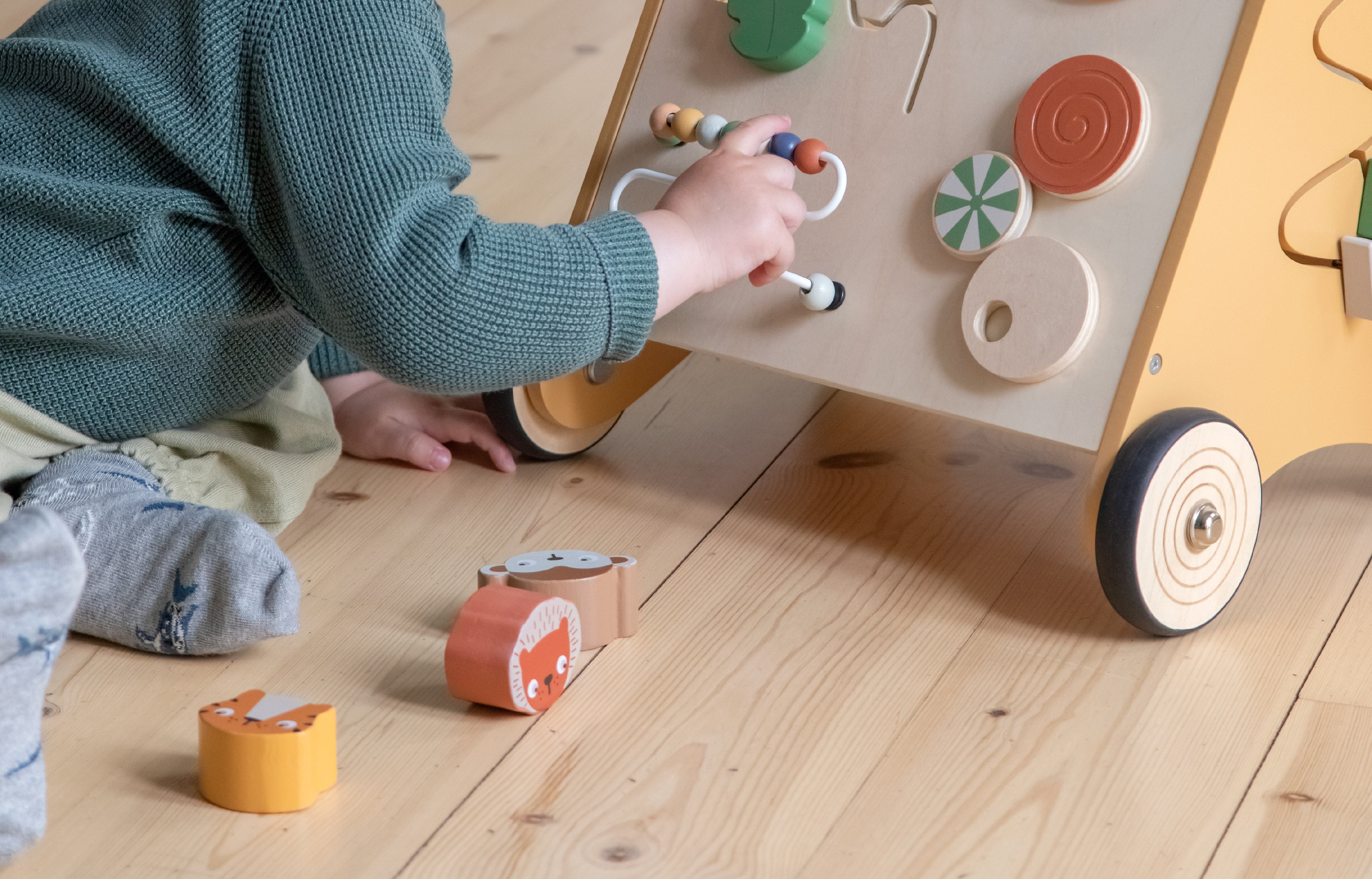The Sitting Position
During the crawling stage, your baby will often learn to sit up independently – usually from a side-lying or crawling position, using what’s called the “mermaid position,” where both legs are bent to one side. The sitting position is only developmentally appropriate once your baby can get into and out of it independently.
When your baby can sit up on their own, it’s a sign that they’ve developed enough strength, body control, and balance reactions to hold the body upright and react safely if they lose balance.
Sitting gives new opportunities – free hands for play and the ability to move between different positions (from tummy to crawl, crawl to stand, etc.). However, sitting is a more passive posture and gives fewer movement experiences than lying on the tummy or crawling.
For this reason, it’s best not to sit your baby up until they can do so independently. During meals, when sitting upright is necessary, a highchair can help – but return your baby to the floor as soon as mealtime is over.






















